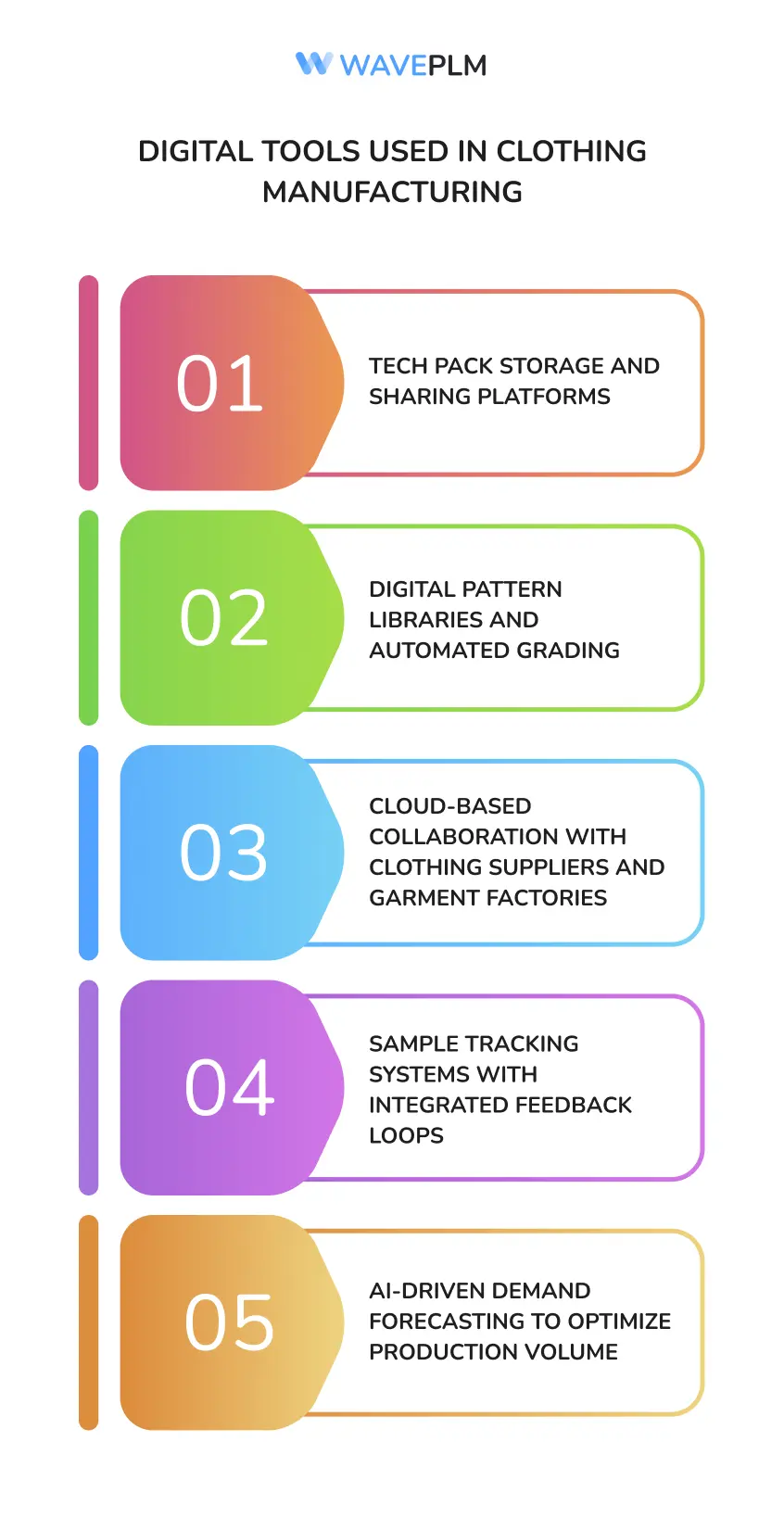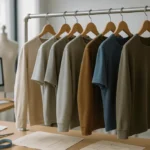
Clothing production is the backbone of the global fashion industry, forming a vital part of interconnected industries such as textile, fashion, and soft goods industries. It connects creativity with commerce and transforms ideas into products people wear every day. From the very first concept sketch to the polished pieces displayed in retail stores or online platforms, every detail in this process matters. Factories handle various types of garments and styles to meet diverse market needs.
A modern garment factory brings this vision to life with a carefully managed system of design, sourcing, manufacturing, and logistics. The warehouse plays a crucial role in storing raw materials and finished garments as part of the production and distribution process. This comprehensive guide explores how clothing manufacturing operates within a factory environment, outlining the processes, challenges, technologies, and partnerships involved in turning creative inspiration into factory garments ready for global markets, with quality that reflects the brand’s reputation and standards.
What Is a Garment Factory?
A garment factory is a purpose-built facility where clothes are produced in large quantities. Many companies operate garment factories, each with their own specialties and market focus. These factories often include multiple departments such as the cutting section, sewing floor, sample room, embroidery area, packaging unit, and quality control lab. The scale of operations may vary greatly. Some clothing factories focus on small-batch custom clothing lines, while others support full-scale production for global fashion brands.
In today’s fashion landscape, a clothing manufacturer may serve different roles. A company may specialize in certain types of apparel or production methods. Some act as Original Equipment Manufacturers (OEM), handling every step from fabric sourcing to packaging. Others operate on a Cut, Make, Trim (CMT) basis, where the brand supplies fabrics and tech packs, and the garment factory focuses on execution.
Many modern clothing manufacturers are investing in automation, sustainable practices, and smart supply chain solutions to remain competitive. Leading companies in the industry are recognized for their ability to specialize in innovative manufacturing techniques. They now integrate lean manufacturing, digitized pattern making, fabric-saving cutting systems, and sustainability tracking across their operations.
CMT vs. OEM: Understanding the Two Key Manufacturing Models
Fashion brands can choose between two main manufacturing models based on their business structure and internal capabilities:
- CMT (Cut, Make, Trim): The brand or fashion designer provides all fabrics, trims, and detailed tech packs. The clothing factory focuses on the manual work—cutting the fabrics, assembling the garments, adding labels or embellishments, and final packing—and is responsible for the actual manufacture of the garments. CMT works best for fashion brands with internal teams to manage development.
- OEM (Original Equipment Manufacturer): The clothing manufacturer takes full responsibility for the garment production process. This includes sourcing fabrics and trims, creating samples, grading patterns, handling the manufacturing, and final delivery. OEM services are ideal for startups or growing fashion brands looking to scale efficiently.
Some factories may have limited resources or capacity, which can influence the choice between CMT and OEM models.
Deep Dive into the Garment Manufacturing Process
|
Stage |
Description |
|---|---|
|
Concept Design |
Brands define style, color palettes, fabric choices, and target customers, guided by current fashion trends and the vision for the upcoming collection. |
|
Tech Pack Creation |
Detailed documents are created, including all necessary details about fabrics, trims, and construction, as well as measurements and notes. |
|
Sourcing |
The clothing supplier finds matching fabrics, zippers, buttons, and linings from global or local markets. Sustainable materials such as wool are increasingly sourced for eco-friendly collections. |
|
Sample Room Development |
Fit samples and prototypes are created for each new collection, revised, and finalized. |
|
Pattern Making & Grading |
Patterns are made and adjusted for all sizes in the clothing line. |
|
Cutting |
Fabrics are laid in layers and precision-cut using CAD-guided machines or manual tools. Innovation in machinery and processes improves efficiency and quality. |
|
Sewing & Assembly |
Skilled garment factory workers, many of whom are women, stitch the pieces together on production lines. Innovation in assembly methods further enhances quality and productivity. |
|
Quality Inspection |
Finished clothes are checked for defects, fit, stitching accuracy, and label compliance. |
|
Finishing Touches |
Clothes are steamed, labeled, packed, and prepared for shipping or warehousing. Finished garments can be shipped to global destinations and stored in warehouses before distribution. |
|
Distribution & Shipping |
Items are sent to retailers, online fulfillment centers, or fashion brand warehouses. Products are also shipped to retail stores and made available through the brand’s online shop. |
Each step involves collaboration between designers, sourcing experts, production leads, and quality assurance professionals to ensure consistency, quality, and speed.
The reality is that working conditions in some factories can be harsh, highlighting the importance of ethical practices throughout the manufacturing process.
Pattern Making and Design: The Blueprint of Every Garment
Pattern making and design are the foundation of every successful clothing line. At our clothing factory, this process begins with a close collaboration between our skilled team and our customers, ensuring that each garment reflects the brand’s unique vision. Using advanced computer-aided design (CAD) technology, our pattern makers translate creative ideas into precise blueprints, guaranteeing a perfect fit and efficient use of materials. This attention to detail is crucial for maintaining high quality across all garments, whether producing a simple t-shirt or a complex, multi-layered coat.
Customization options are at the heart of our design services. From intricate embroidery to personalized labeling, we offer a range of enhancements that help brands stand out in the competitive fashion industry. Our team’s expertise in pattern making and design ensures that every garment not only looks great but also meets the highest standards of comfort and durability. By combining creativity, technology, and craftsmanship, we bring your clothing concepts to life with exceptional quality and style.
Sustainable Materials: Building a Greener Wardrobe
Sustainability is more than a trend—it’s a responsibility that shapes every decision at our clothing manufacturer. We are dedicated to sourcing and using sustainable materials that minimize environmental impact while delivering superior comfort and durability. Our clothing supplier network provides us with eco-friendly fabrics such as organic cotton, recycled polyester, and Tencel, allowing us to create garments that are both stylish and sustainable.
Our production process is designed to reduce waste at every stage. We actively incorporate recycling and upcycling practices, transforming fabric scraps and surplus materials into new, wearable pieces. By choosing sustainable materials, we help our customers build a greener wardrobe and support a more responsible fashion industry. Every garment produced in our factory reflects our commitment to sustainability, ensuring that you can wear your values with pride.
Production Planning and Scheduling: Orchestrating Efficiency
Efficient production planning and scheduling are the backbone of successful garment factories. Our team leverages advanced technology and proven methodologies to coordinate every step of the production process, from initial pattern making to final shipping. By working closely with our suppliers, we ensure that all materials arrive on time, allowing us to maintain a smooth workflow and meet even the tightest deadlines.
This meticulous approach not only enhances the quality of our garments but also reduces waste and keeps costs under control. Our garment factories are equipped with state-of-the-art systems that monitor progress in real time, enabling us to quickly address any issues and provide excellent customer service. Through careful planning and scheduling, we deliver high-quality garments efficiently, supporting our customers’ business goals and building lasting partnerships.
Why the Right Clothing Manufacturer Can Define Your Brand’s Success
Choosing a reliable clothing manufacturer is critical to the success of any fashion business. A great manufacturer becomes an extension of your internal team, helping you not only produce garments but improve your clothing line through expert advice, fabric options, and customization options. The best garment manufacturers offer transparency, sustainability tracking, consistent communication, and the ability to scale quickly.
Key Qualities of a Trustworthy Clothing Factory:
- Ability to meet tight production deadlines
- Transparent costing and timelines
- Eco-conscious sourcing (organic cotton, recycled fibers, low-waste systems)
- On-site sample room for fast prototyping
- Consistent quality control with third-party checks
- Strong customer support and development advice

The Business Case for Factory Garments
Factory garments are efficient, scalable, and affordable. Whether you’re making high quality t shirts or luxury coats, working with a manufacturing garment factory ensures consistency across styles and sizes. With demand for fast fashion rising, factories must deliver products quickly without compromising on quality. Today’s clothing manufacturers use technology to balance these needs and minimize production waste.
Clothing Production Costs: Breaking Down the Numbers
Understanding clothing production costs is essential for brands looking to balance quality and affordability. At our clothing factory, we believe in transparency, providing our customers with a clear breakdown of costs at every stage of the production process. Factors such as garment type, choice of materials, and order volume all influence the final price, whether you’re producing high quality t shirts, elegant dresses, or durable coats.
Our team works closely with customers to tailor solutions that fit their budget, offering a variety of customization options to meet specific needs. By openly discussing pricing and production costs, we empower brands to make informed decisions about their clothing lines. This collaborative approach ensures that every garment delivers exceptional value, quality, and style—no matter the size or scope of your project.
Common Challenges Faced by Garment Factories
Even with modern systems in place, manufacturers face ongoing challenges:
- Global supply chain disruptions causing delivery delays
- Labor shortages, particularly for sewing and finishing
- Sustainability pressures to reduce fabric waste and improve working conditions
- Fluctuating prices of raw materials such as cotton and linen
- Compliance with fashion industry certifications and country-specific regulations
Leading factories are turning to automation, digital tracking, and ethical labor practices to overcome these hurdles and maintain high quality standards.
How Digital Tools Streamline the Apparel Supply Chain
Today’s apparel supply chain is digital-first. PLM software plays a central role in improving coordination between brands, designers, factories, and clothing suppliers. Product Lifecycle Management (PLM) platforms streamline communication, speed up approvals, and centralize data.
Digital Tools Used in Clothing Manufacturing:
- Tech pack storage and sharing platforms
- Digital pattern libraries and automated grading
- Cloud-based collaboration with clothing suppliers and garment factories
- Sample tracking systems with integrated feedback loops
- AI-driven demand forecasting to optimize production volume
PLM helps reduce errors, speeds up lead times, and allows better communication with overseas factories or satellite teams. It’s now a standard tool among top-tier garment manufacturers.

Factory Audits and Compliance: Meeting Global Standards
Maintaining the highest standards of quality, safety, and social responsibility is a core value for our clothing manufacturer. Our garment factories undergo rigorous factory audits and compliance checks to ensure alignment with global standards and the expectations of established brands and retailers. These audits cover everything from labor practices and workplace safety to environmental sustainability and product safety.
Our dedicated team works proactively to stay ahead of industry regulations, providing customers with regular updates and full transparency throughout the production process. By prioritizing compliance and social responsibility, we not only protect our workers and the environment but also deliver garments that brands and consumers can trust. Partnering with us means choosing a factory committed to producing high-quality, sustainable clothing that meets the demands of today’s global fashion industry.
Why Investing in a Garment Factory Pays Off
A well-run garment factory does more than just produce clothes. It enables fashion brands to scale collections, try new ideas, reduce costs, and offer fast turnaround. Whether you’re launching a direct-to-consumer clothing line or working with established retailers, a garment manufacturer helps you meet the growing expectations of today’s customers.
Top clothing factories in countries like China, India, Vietnam, and Bangladesh offer efficient production, competitive prices, and high quality standards. Many also support sustainable practices, such as using organic cotton or implementing solar-powered cutting floors.
Building a Lasting Partnership with a Garment Manufacturer
To succeed in the fashion industry, your relationship with a clothing manufacturer must be more than transactional. The most successful brands collaborate closely with their factory teams, co-developing products, sharing trend insights, and working on new innovations in textiles, embroidery, and garment construction.
When searching for a clothing manufacturer, look for proven experience in your niche (e.g., t shirts, outerwear, lingerie), scalable infrastructure, and excellent customer service. Factories that offer sample room development, flexible MOQs, and digital support are ideal for growing brands.
Advanced Garment Production Process Checklist
|
Task |
Team |
Status |
|
Finalize fashion concept for upcoming season |
Creative Team |
In Progress |
|
Develop complete tech pack (per garment) |
Design Team |
Pending Approval |
|
Source certified organic cotton suppliers |
Sourcing |
Confirmed |
|
Create initial fit samples in sample room |
Product Development |
Scheduled |
|
Conduct fit and construction reviews |
Technical Team |
Not Started |
|
Grade patterns across full size range |
Pattern Makers |
In Progress |
|
Cut and layer fabrics for trial run |
Cutting Department |
Ready |
|
Stitch sample batch for pre-production test |
Sewing Floor |
Scheduled |
|
Perform quality audit and compliance check |
QA & Compliance |
Not Started |
|
Organize packaging and final shipping |
Logistics |
Upcoming |
By maintaining this checklist and monitoring each phase of the clothing manufacturing process, fashion brands can ensure efficiency, transparency, and quality from concept to delivery.





Leave a Reply